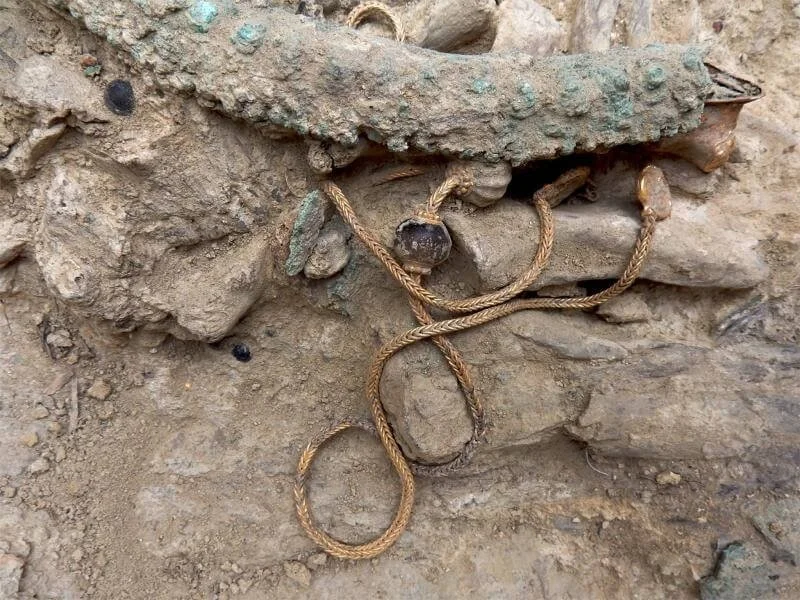New research conducted by the Max Planck Society unveils a significant chapter in the history of chicken domestication, shedding light on their widespread cultivation across southern Central Asia as early as 400 BCE. This breakthrough challenges previous assumptions and provides a clearer understanding of the origins and diffusion of these vital animals in ancient times.
Published in Nature Communications, the study, authored by an international team comprising archaeologists, historians, and biomolecular scientists, presents compelling evidence for the intentional rearing of chickens for egg production. It suggests that the loss of seasonal egg laying played a pivotal role in the expansion of domestic chickens throughout Eurasia and northeast Africa.
An eggshell fragment from the site of Bash Tepa, representing one of the earliest pieces of evidence for chickens on the Silk Road. Credit: Robert Spengler
By analyzing eggshell fragments recovered from 12 archaeological sites spanning 1,500 years, researchers demonstrate that chickens were extensively raised in Central Asia from around 400 BCE to 1000 CE, likely propagated along the ancient Silk Road. The abundance of eggshells indicates that these birds were laying eggs out of season, a trait that appealed to ancient societies and facilitated their widespread adoption.
Employing a biomolecular analysis technique called ZooMS, which identifies species from protein signals in animal remains, the team confirmed the presence of chicken eggs in the archaeological record. This method, more efficient and cost-effective than genetic analysis, proved instrumental in unraveling the historical interactions between humans and animals.
Dr. Carli Peters, a researcher at the Max Planck Institute of Geoanthropology and lead author of the study, emphasizes the potential of ZooMS in illuminating past human-animal relationships. The identification of chicken eggshell fragments and their prevalence across sediment layers underscores a significant departure from the seasonal egg-laying patterns observed in their wild ancestors.
The breathing pore of an ancient eggshell fragment from the medieval site of Tashbulak in Uzbekistan under high power SEM magnification. The morphology of these breathing pours helps with the identification. Credit: Robert Spengler
According to Dr. Robert Spengler, leader of the Domestication and Anthropogenic Evolution research group, this finding represents the earliest evidence of the loss of seasonal egg laying in the archaeological record. It offers valuable insights into the process of domestication and the evolving dynamics between humans and animals.
In essence, this research provides a crucial piece of the puzzle regarding the domestication of chickens, highlighting the pivotal role of prolific egg laying in shaping their global significance as an economically vital species. The interdisciplinary approach employed in this study exemplifies the potential of collaborative efforts and innovative methodologies in unraveling ancient mysteries and enriching our understanding of the past.









